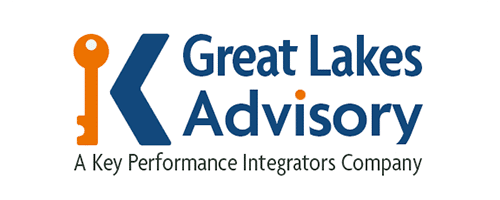Every business operates using a variety of activities or processes designed to accomplish a specific objective. Such processes create a consistent order within an organization. However, they also need to boost efficiency. Having said that, business processes can wind up becoming untenable or even useless over time. If that occurs, they wind up resulting in product and service delays and they drive up costs, risks, and expenses.
When that happens, your company needs to undergo process improvement activities routinely. Process optimization is a crucial component to process improvement. The right process improvement ideas result in a more profitable, efficient, and effective organization.
Table of Contents
What Is Business Process Improvement
If you had to define business process improvement in one word, it would be “refinement”. Watch a specific team in your business, and record how long it takes them on average to perform a routine activity. Use this information to optimize things for the better. Look for ways of doing things faster and better. If you don’t track the individual tasks in your company, you’ll never find the roadblocks, discover duplicate tasks, or find fresh chances to automate and innovate.
What are some specific process improvement goals your company should look into?
- Reduce the expense or time involved in doing routine tasks.
- Discover quicker ways of meeting goals related to quality, productivity, or revenue.
- Explore fresh ideas for serving your clients with a user experience that delights them and boosts brand loyalty.
Why Is Process Improvement Important?
Process improvement is what helps you navigate better ways for operations to be executed. Consequently, your work is done better. You can make changes happen more quickly, you’ll boost efficiency, and you’ll enjoy better gains for what you put into it. Process improvement is important for three essential reasons.
1. Move Faster
A big component of process improvement is cutting out any parts of process management where functions might be solved more expediently by different arrangements. When these changes are put into place, a coherent process design can let your business work faster given that you’ll only have to focus on the true essentials.
2. Improve Accuracy
Part of trimming down the unnecessary components of any process is creating space to replace them with new tasks created for solving relevant issues. Add these up to solve target problems in minimal fashion and friction.
3. Boost Your ROI
Once a process is improved or even whittled down to involve more tasks and steps necessary to provide the results you want, then you can enjoy more return on your investment from similar or even lower efforts than had previously been necessary.
7 Business Process Improvement Examples
Improving business processes so you get improved results from substantially less effort sounds nice, but how do you actually do it in the real world? The following are seven examples of process improvement your organization might be able to implement.
1. Reduce Costs
One of the first process improvement opportunities you should look into is the chance to reduce costs. Cost reductions emphasize general effectiveness over efficiency, but they can improve efficiency over time.
Look for duplication among your tasks or steps that just aren’t necessary. Review the order your tasks happen and analyze the materials you use regularly. Look for any tasks that you can automate. You do need to be careful with cost reductions, however. Never reduce costs in any way that reduces the quality of your products or services.
2. Eliminate Waste
Eliminating waste is closely related to reducing costs, but it’s not always about money. Sometimes, it’s about saving time, producing better-end-quality results, or avoiding wasting resources. If you want to eliminate waste in your processes, then you can deliver value to your customers faster than ever. Look into the following simple process improvement ideas to accomplish this:
- Inefficiencies in employee motions
- Unnecessary product movement
- Products stuck waiting for their next process step
- Inventory just sitting around
- Under-utilized or even non-utilized talent
- Overproduction
- Excess processing
- Defects
3. Abandon Paper-Based Processes
Of all office process improvement ideas, this is one that companies love since they can sell their eco-conscious credentials to employees and consumers alike. Workers in paper-document environments spend 20% of each day looking for and getting information together. That’s a full workday every week.
Accountability and data accuracy also go up when you switch to a digital system. If you’re just starting looking into work process improvement ideas, then this is probably the first one you want to start with.
4. Improve Communication and Collaboration
This is one of the work process improvement ideas that should apply to any organization, regardless of sector, shape, or size. As far as process improvement examples go, this one should focus on insights and information being generated at each process flow stage and then getting to where they are needed.
Every member of your team should pass knowledge to each other without friction. This helps team members maintain a state of consensus. That minimizes arguments or back-and-forth anywhere in process management. Stakeholders can do their assigned work the best they can because they’re informed enough to make quick, effective, and appropriate decisions.
5. Speed Up Customer Service
9 out of 10 consumers decide who they do business with based simply on customer service experiences. Slow responses to consumer questions and concerns can drag down even the strongest of positive associations, and poor attitude or behavior can alienate a customer entirely. Automate anything you can to avoid manual tasks that slow things to a crawl and result in errors.
6. Improve Safety
Better safety makes employees feel better about where they are working. It also reduces needless delays and costs. Emphasize improved employee training, organize your workplace in accordance with best practices and standards, and create a standardized process for anyone reporting hazards. Have everyone pay mindful attention to any near misses or visual indications of potential hazards.
7. Enhance Process Visualization
Understand the processes you already have in place and those you are implementing. List each step involved, and quantify how much time each task takes to complete. Identify the employees who are usually responsible for each step, and then diagram everything. Having a visual aid in the form of a diagram will ensure fewer mistakes are made. With this visual aid, you should start immediately seeing things you can do to improve things. If you don’t, then consult business process optimization specialists who can take an objective look.
Process Improvement Techniques
One roadblock many companies hit is getting good at identifying improvement opportunities but not knowing techniques to implement solutions. The following are a few basics you might consider:
- A3 Problem Solving: Use a single sheet of paper to ascertain a team’s current state, identify where they should be, choose performance measurements, develop an implementation plan, and track any results.
- 5S: Organize your workplace towards efficiency and safety along with the principles of Sort, Set in Order, Shine, Standardize, and Sustain.
- 5 Whys: State a problem and then ask why it happens five different times. This will usually root out the cause of an issue.
- The PDSA Plan: Plan. Do. Study. Act. This simple cycle involves defining the issue and identifying potential solutions before implementing an experimental answer. Review what results happen from the change, and add it to standardized procedures if improvements were satisfactory.
- Get Outside Help: If you want professional help with any of this, schedule a consultation with a business process optimization professional.
Don’t Go It Alone
Great Lake Advisory’s sure if you want your business to be successful, or just competitive, then you need business process improvements going on all the time. However, you don’t need to let things overwhelm you. Certain changes might be big projects, but many changes can be simple things you can do on the fly. Reach out to business process optimization advisors if you need help with any of this.


